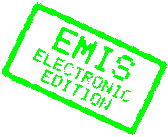q-Hypergeometric Series and Macdonald Functions
Naihuan Jing
DOI: 10.1023/A:1022463918288
Abstract
We derive a duality formula for two-row Macdonald functions by studying their relation with basic hypergeometric functions. We introduce two parameter vertex operators to construct a family of symmetric functions generalizing Hall-Littlewood functions. Their relation with Macdonald functions is governed by a very well-poised q-hypergeometric functions of type 4  3, for which we obtain linear transformation formulas in terms of the Jacobi theta function and the q-Gamma function. The transformation formulas are then used to give the duality formula and a new formula for two-row Macdonald functions in terms of the vertex operators. The Jack polynomials are also treated accordingly.
3, for which we obtain linear transformation formulas in terms of the Jacobi theta function and the q-Gamma function. The transformation formulas are then used to give the duality formula and a new formula for two-row Macdonald functions in terms of the vertex operators. The Jack polynomials are also treated accordingly.
 3, for which we obtain linear transformation formulas in terms of the Jacobi theta function and the q-Gamma function. The transformation formulas are then used to give the duality formula and a new formula for two-row Macdonald functions in terms of the vertex operators. The Jack polynomials are also treated accordingly.
3, for which we obtain linear transformation formulas in terms of the Jacobi theta function and the q-Gamma function. The transformation formulas are then used to give the duality formula and a new formula for two-row Macdonald functions in terms of the vertex operators. The Jack polynomials are also treated accordingly.Pages: 291–305
Keywords: basic hypergeometric function; vertex operator; Macdonald symmetric function; Jack symmetric function
Full Text: PDF
References
1. Frenkel I., Lepowsky J,, and Meurman A., Vertex operator algebras and the Monster, Academic Press, New York, 1988.
2. Garcia A.M. and Haiman M.,A graded representation model for Macdonald's polynomials, UCSD preprint, 1992.
3. Gasper G. and Rahman M., Basic hypergeometric series, Cambridge University Press, Cambridge, 1990.
4. Jing N.H., "Vertex operators, symmetric functions, and the spin group rn," J. Algebra 138 1991,340-398.
5. Jing N.H., "Vertex operators and Hall-Littlewood symmetric functions," Adv. in Math. 87 (1991), 226-248.
6. Jing N.H. and J6zefiak T., "A formula for two row Macdonald functions," Duke Math. J. 67 (1992), 377-385.
7. Macdonald I.G., Symmetric functions and Hall polynomials, Oxford University, Oxford, 1979.
8. Macdonald I.G., A new class of symmetric functions 20e Actes Sgminaire Lotharingien (L. Cerlienco and D. Foata, eds.), vol. 20, Publ. Inst. Rech. Math. Avancee, Strasboug, (1988), 131-171.
9. Sears D.B., "Transformations of basic hypergeometric functions of any order," Proc. London Math. Soc., Ser. 2 (3) 53 (1951), 181-191.
10. Stembridge J.R., "Some particular entries of the two-parameter Kostka matrix," Proc. Amer. Math. Soc., to appear.
2. Garcia A.M. and Haiman M.,A graded representation model for Macdonald's polynomials, UCSD preprint, 1992.
3. Gasper G. and Rahman M., Basic hypergeometric series, Cambridge University Press, Cambridge, 1990.
4. Jing N.H., "Vertex operators, symmetric functions, and the spin group rn," J. Algebra 138 1991,340-398.
5. Jing N.H., "Vertex operators and Hall-Littlewood symmetric functions," Adv. in Math. 87 (1991), 226-248.
6. Jing N.H. and J6zefiak T., "A formula for two row Macdonald functions," Duke Math. J. 67 (1992), 377-385.
7. Macdonald I.G., Symmetric functions and Hall polynomials, Oxford University, Oxford, 1979.
8. Macdonald I.G., A new class of symmetric functions 20e Actes Sgminaire Lotharingien (L. Cerlienco and D. Foata, eds.), vol. 20, Publ. Inst. Rech. Math. Avancee, Strasboug, (1988), 131-171.
9. Sears D.B., "Transformations of basic hypergeometric functions of any order," Proc. London Math. Soc., Ser. 2 (3) 53 (1951), 181-191.
10. Stembridge J.R., "Some particular entries of the two-parameter Kostka matrix," Proc. Amer. Math. Soc., to appear.
